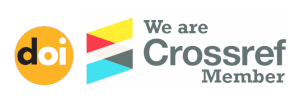ENHANCING ENGLISH LANGUAGE ORAL PARTICIPATION: STRATEGIES USED BY GRADE 9 ENGLISH TEACHERS IN ZAMBOANGA DEL NORTE’S 3RD DISTRICT
Keywords:
English language, Oral participation, English teachers, Strategies, ApproachesAbstract
This study investigated the activities and approaches employed by Grade 9 English teachers to promote oral participation in schools within the 3rd District of Zamboanga del Norte. Using a descriptive research method, the study provided a complete summary of the methods used to enhance students’ oral communication skills. Twenty Grade 9 English teachers participated as respondents, completing a checklist questionnaire for data collection. Statistical tools, including frequency counts and rankings, were used to analyze the data. The result revealed that activities such as oral quizzes, brainstorming, role playing, debate, and presentations were widely used in the classroom to foster English language oral participation. Similarly, teachers utilized various approaches, including reading, communicative language teaching, language-based, collaborative, personal-based, information-based, reflective, and task-based approaches. These findings highlighted the importance of employing engaging and effective strategies to foster active participation and proficiency in English communication among students. A sourcebook was gathered to provide effective teaching activities and approaches to promote English language oral participation among Grade 9 students.
Downloads
References
Apat, H. C. M., Sarias, K. J. M., Tomarong, M. T., & Bacatan, J. R. (2023). The Influence of Oral Communication on the Learning Engagement of Students. Canadian Journal of Language and Literature Studies, 3(4), 44–58. https://doi.org/10.53103/cjlls.v3i4.104
Bensaou, H. (2015). Literature Study in the “Global Village” Approaches to Enhance Personal Development and Promote Cultural Dialogue. ANGLISTICUM. Journal of the Association-Institute for English Language and American Studies, 4(2), 60–62. Retrieved from https://anglisticum.org.mk/index.php/IJLLIS/article/view/211
Chao, N., & Kim, H. (2020). Oral Presentations as an Alternative Approach to Enhance L2 Learning and Communication Skills. Journal of Digital Convergence, 18, 111-122. https://doi.org/10.14400/JDC.2020.18.6.121.
Dhillon, K.K., & Mogan, S. (2014). Language-Based Approaches to Understanding Literature: A Creative Activity Module. The English teacher, 43, 16.
Hattie, J & Timperley (2007). The power of feedback. Review of Educational Research 77 (1):81-112. http://dx.doi.org/10.3102/003465430298487
Horwitz, E. K., Horwitz, M. B., & Cope, J. (1986). Foreign Language Classroom Anxiety. The Modern Language Journal, 70, 125-132.
http://dx.doi.org/10.1111/j.1540-4781.1986.tb05256.x
Kareema, M. (2016). Impact of using selected oral activities in promoting the second language learners' speaking ability. https://www.semanticscholar.org/paper/Impact-of-using-selected-oral-activities-in-the-Kareema/4f30d9e8d4ef1fe39a807dc96ba08c3b2877eadc
Karnieli-Miller. (2020). Reflective practice in the teaching of communication skills. https://doi.org/10.1016/j.pec.2020.06.021
Nurakhir, A., Nindya Palupi, F., Langeveld, C., & Nurmalia, D. (2020). Students’ Views of Classroom Debates as a Strategy to Enhance Critical Thinking and Oral Communication Skills. Nurse Media Journal of Nursing, 10(2), 130-145. https://doi.org/10.14710/nmjn.v10i2.29864
Ozenc, E.G., & Ferhat, S. (2022).Effect of self-evaluation-based oral reading method in elementary school on reading fluency and reading comprehension. Participatory Educational Research 9 (2), 437-462, 2022. http://dx.doi.org/10.17275/per.22.48.9.2
Richards, J.C. and Rodgers, T.S. (2014) Approaches and Methods in Language Teaching. Cambridge University Press, Cambridge, England.
Toro, V., Camacho-Minuche, G., Pinza-Tapia, E., & Paredes, F. (2019). The Use of the Communicative Language Teaching Approach to Improve Students' Oral Skills. English Language Teaching, 12(1), 110-118. http://dx.doi.org/10.5539/elt.v12n1p110
Unin, N. & Bearing, P. (2016). Brainstorming as a Way to Approach Student-centered Learning in the ESL Classroom. Procedia-Social and Behavioral Sciences 224, 605-612, 2016. https://doi.org/10.1016/j.sbspro.2016.05.450
Published on: 01-08-2025
Also Available On
How to Cite
Issue
Section
License
Copyright (c) 2025 Russellyn Racho, Janice Viadnes, John Rey Jatico, Charity Bunalan, Marife Napallaton, Nova Ness Fabrienne Carin

This work is licensed under a Creative Commons Attribution 4.0 International License.
Authors contributing to this journal retain the copyright of their articles but agree to publish their articles under the terms of the Creative Commons CC-BY 4.0 License (http://creativecommons.org/licenses/by/4.0/) allowing third parties to copy and redistribute the material in any medium or format, and to remix, transform, and build upon the material, for any purpose, even commercially, under the condition that appropriate credit is given, that a link to the license is provided, and that they indicate if changes were made. They may do so in any reasonable manner, but not in any way that suggests the licensor endorses them or their use.


